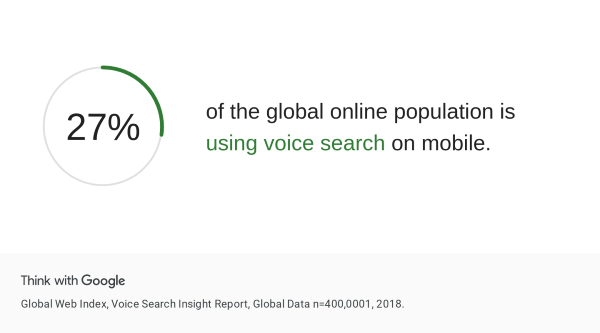Conversational tone may be the key to user engagement. But can you practice conversational copywriting that works for SEO? Let’s discuss.
What You Need to Know About Conversational Copywriting for SEO
When you think about the things you enjoy reading. What comes to mind? Go beyond book genres or websites that deliver topics you like (or need) to read. I want you to think about writing styles.
Do you find yourself drawn to books or spending more time reading articles that are written in a way that isn’t speaking over you? How about those written in a conversational tone?
When an ad presents itself on your social media timeline, what stops you in your tracks? Makes you think? Makes you react?
Are you chomping at the bit to open an article if the social media post says “Check out our new article”?
Nah. That’s not at all enticing!
So why would you approach your own copywriting in the same manner?
Let’s think about improving your marketing (whether your social media posts, ads or articles) through the use of a conversational tone.

What is a Conversational Tone in Copywriting?
A conversational tone is, simply, a style of writing that is less formal and sounds like friends are talking to each other. However, conversational writing is not writing like you talk.
Conversational writing is humanized but ensures clear and concise messaging.
Why Write in a Conversational Style?
People like speaking with people.
Because conversational copywriting is more relaxed, it’s easy for business owners, marketers and writers to consider this style of writing:
- Unprofessional.
- Careless.
- Disrespectful.
Truth be told, writing in a conversational tone is not only not unprofessional, but it’s actually really important. Here’s why:
1. It's Easier to Read
According to data from a Gallup analysis, more than half of Americans between the ages of 16 and 74 read below a sixth-grade level.
Sixth-grade students are usually either 11 or 12 years old. So, we’re talking about roughly 54% of Americans reading at a pre-teen level.
In her article entitled Processing Complex Sentences: Introduction, Beth Lawrence tells us that short, simple sentences are easier to process and easier for us to recall from memory.
2. Creates Connections
Have you ever read an executive order from the president? Scholarly articles? Studies?
Unless you’ve dedicated much of your time to the study of the English language, reading content like those mentioned above may be a difficult task. Aside from that, it’s rare to feel any sort of connection, most likely because you’re likely focused on extracting usable data.
Am I right?
Not only does this extra work to decipher difficult topics written at too high a level feel like it hurts your brain, you probably feel as though you’re being talked at.
Why would you want to do this to your readers?
Toning down industry jargon and relaxing your writing to get on the level of more of those interested in your products and services will help to create a deeper connection with your readers.
3. Involves Readers
Sitting down listening to a lecture … Well, that’s what school is for, right?
However, any good teacher knows that involving their students in lectures keeps them engaged.
The purpose of every piece of marketing, whether for social media, article writing, or ad copy is to generate engagement, interest and ultimately sales. Unfortunately, if you’re writing dull, highly advanced content, about half of the US population isn’t going to “feel it.”
Conversational copy is much more engaging (and effective) because it’s easy to read, people have connected with you and the content involves them. You find ways to help the user feel. This writing employs ways to involve your audience.
Try to:
- Ask questions – By asking questions in your copy, you create an opportunity for the reader to pause, think and respond.
- Be surprising – Make surprising statements (and bold them) in your articles or start an email with a not-so-standard greeting (Hello, Gorgeous!). These surprises get attention!
Speaking of writing being engaging, why not spend some time learning how to format a blog post for even more engagement?
Should You Use Conversational Tone in SEO Copywriting?
Not just yes, but heck yes! Here’s why:
1. Voice Search is on the Rise

In 2018, Google shared that 27% of online searches used voice search on mobile.
More and more, we’re using voice search and voice assistants to find a business while we’re driving, instructions while we’re in the kitchen and information we can use in our daily lives (weather, how-tos, etc).
The queries we make to these voice assistants are very conversational, which have evolved from historical internet searches.
Even kids are using smart speakers to ask questions and gain information for a range of subjects. “Hey Google, what sound does a zebra make?” and similar questions were popular with my own kids when they were younger.
In the early days of internet search (and even today’s online searches on a desktop), it wasn’t uncommon to type something like “best family dog”.
Now?
When we’re talking to Google, we’ll say “Hey Google, what’s the best dog for a family with young kids?”
Writing in a conversational tone is one of the simplest ways to optimize for voice search and target these long-tail keywords!
2. It Can Fit into Helpful Content
Google is in the midst of rolling out their “helpful content” update which is supposed to promote helpful content (that incorporates a people-first approach to writing) and demote content only written for SEO purposes.
Now, we’re not saying SEO is a lost cause here. What we are saying is that writing with a conversational tone (and knowing what your customers or prospects need “help” with) is most likely going to help guide your writing to fulfill both needs.
So what is “unhelpful content”?
Marie Haynes tells us that unhelpful content may be:
- Content produced only for search engines instead of humans-first.
- Extensive automated content on a bunch of topics.
- Summarized content without adding value (more data, more experience, your opinions).
- Writing about trending topics whether or not they apply to your audience.
- Writing for (unverified/arbitrary) word counts.
- That is written with an undelivered promise to answer a question.
So, knowing your audience and understanding their needs and wants will help guide you toward helpful content. And if you haven’t made it easy enough for them to read, can it actually be helpful?
Personal opinion? Probably not for the general population… but as with everything in SEO this may depend on your niche and target audience.
Getting Started with Conversational Copywriting
Are you convinced that you need to make the switch to conversational writing but aren’t sure how to start?
Here are a few tips to incorporate a conversational tone in your writing (even for SEO):
- Write clear and concise messaging
Use plain, direct language that gets the point across quickly.
Not Great: We can assist you with your problem.
Better: We’ll help you.
- Use contractions
Not Great: If you are ready to start, contact us today!
Better: If you’re ready to begin, contact us today!
- Personalize
Not Great: For writers trying to learn a new writing style, practice is recommended.
Better: If you’re ready to learn a new writing style, we recommend regular practice.
- Ask questions
Not Great: This is what I mean.
Better: See what I mean?
More Tips
- Break grammar rules
- Add side notes with parenthesis
- Use emotion
- Use slang
Examples of Conversational Copywriting
Why Work with GYBO Digital Marketing?
Are you ready to improve your online marketing but don’t have the time to learn and implement SEO? We drive sound, white-hat SEO strategies and offer content marketing services to our clients.
Contact us to start your SEO campaign today.
Contact GYBO

Passionate digital marketing expert with over 10 years of experience. Broad, hands-on marketing skillset, from web developer, SEO, PPC, Data Analytics & Tracking.
